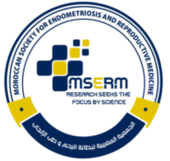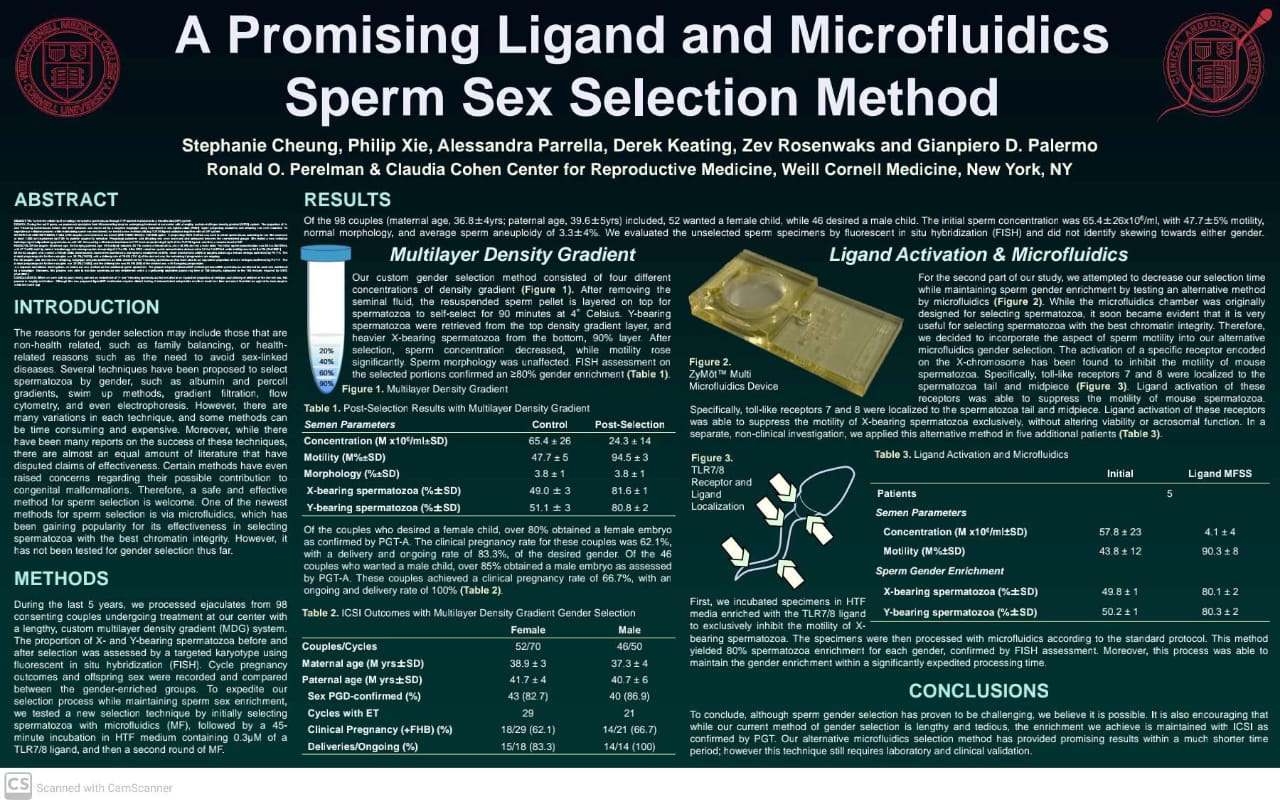Track: ART – LAB
Poster : ART Lab: Basic
Stephanie Cheung
Research Associate
The Ronald O. Perelman and
Claudia Cohen Center for
Reproductive Medicine,
Weill Cornell Medicine
New York, New York
Objective: To test the reliability of selecting sex-specific spermatozoa through ATP content modulation in a microfluidics (MF) system. DESIGN: In 5 years, we processed ejaculates from 98 consenting couples undergoing treatment at our center with a lengthy, custom multilayer density gradient (MDG) system. The proportion of X- and Y-bearing spermatozoa before and after selection was assessed by a targeted karyotype using fluorescent in situ hybridization (FISH). Cycle pregnancy outcomes and offspring sex were recorded. To expedite our selection process while maintaining sperm sex enrichment, we tested a new method utilizing TLR7/8 ligand activation together with an MF system. MATERIALS AND
Methods: A total of 98 couples were treated at our center (IRB 1306014043) in 120 ICSI cycles. A proprietary MDG method was used to select spermatozoa according to sex. We assessed ≥1,000 cells/specimen by FISH to confirm successful selection. Pregnancy outcomes and offspring sex were assessed and compared between the sex-enriched groups. We tested a new selection technique by initially selecting spermatozoa with MF, followed by a 45-minute incubation in HTF medium containing 0.3µM of the TLR7/8 ligand, and then a second round of MF.
Results: Of the couples (maternal age 36.8±4yrs; paternal age 39.6±5yrs) included, 53.1% wanted a female child, while 46.9% desired a male child. The initial sperm concentration was 65.4±26×106/ml, with 47.7±5% motility, normal morphology, and average sperm aneuploidy of 3.3±4%. After MDG selection, sperm concentration decreased to 24.3±14×106/ml, while motility rose to 94.5±3% (P<0.0001). Of the 52 couples who wanted a female child, FISH assessment confirmed a sex-specific enrichment at 80%, which translated to >80% of couples obtaining a female embryo confirmed by PGT-A. The clinical pregnancy rate for these couples was 25.7% (18/70), with a delivery rate of 78.6% (11/14) of the desired sex; the remaining 4 pregnancies are ongoing. For 46 couples who desired male offspring, FISH analysis confirmed an 80% enrichment for Y-bearing spermatozoa that translated to an equivalent proportion of male embryos confirmed by PGT-A. The clinical pregnancy rate for these couples was 28.0% (14/50), and the delivery rate was 88.9% (8/9) of the desired sex, with 5 ongoing pregnancies. In a separate non-clinical investigation, we tested our new method on five additional sperm specimens. The proposed ligand activation/MF method yielded >80% spermatozoa enrichment for each sex, confirmed by a karyotype. Moreover, this process was able to maintain spermatozoa sex enrichment within a significantly expedited processing time of 105 minutes, compared to the 180 minutes required for MDG (P<0.0001).
Conclusions: While we were able to consistently achieve an enrichment of X- and Y-bearing spermatozoa that resulted in an equivalent proportion of embryos and delivery of children of the desired sex, this process is lengthy and tedious. Although this new proposed ligand/MF mechanism requires clinical testing, it demonstrated comparable results in much less time and could therefore be applied to more couples within the same day.
ASMR official sponsorship in the publications of the virtual ASMR conference October 17-21 October 2020

